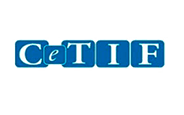ETFs on the rise: How can asset managers regain the upper hand?
By Thomas Elsler

Passively managed investment funds put the actively managed funds of asset managers under pressure. Technology can help the latter to stay competitive in an evolving market.
Statistics show that Exchange Traded Funds (ETF) are becoming more and more important: Market share of passively managed investment funds has increased from 14% to 22% within five years (2011-2016) and it continues to be on the rise, to the detriment of actively managed funds, as it is expected to reach 31% by 2020.[1] The distinguishing trait of most of the ETFs is that they are managed passively: They invest in indexes or baskets of stocks without analyzing the single stocks or making any distinctions between single elements that are part of the index. As a consequence, the effort of the fund managers is limited to controlling the conformance of the fund to the mirrored index, which reduces management costs drastically. In times of MiFID II, increasing duties of transparency on commissions implicate also a higher awareness of investors regarding this topic.
The risk of ETFs
However, there is a price to pay for these cost reductions: Compared to actively managed funds, ETFs usually do not use additional instruments for hedging, but rely exclusively on asset diversification to reduce market risks. Thus, there is an increased risk of negative performances especially during bear markets, as this investment style completely refrains from fundamental and technical analysis of the single stocks. In addition, according to some studies, it would be the ETFs themselves that amplify the impacts of crashes of the market.
Notwithstanding these disadvantages, from an investor point of view the low management fees remain the key competitive advantage for the ETFs. How can actively managed funds become more competitive in this regard, in order to meet the new challenge that has appeared on the market?
Technology comes to asset manager’s assistance
One possibility to win the battle against the loss of further market shares lies in the utilization of technological advancements. The integration of active management with new technological elements reduces both effort and time managers have to spend on each portfolio assigned to them. Technology can lend a hand to asset managers in a number of ways:
Automatic tools are able to reduce the manager’s effort for portfolio maintenance by:
- Continuous monitoring of the portfolio and sending of alerts to the manager in the event of certain occurrences, e.g. an increase of traded volumes or jumps of the prices of the assets in the portfolio;
- Continuous or periodic feedback on technical indicators;
- Monitoring of aspects external to the portfolio, providing the manager with the latest news on the assets in the portfolio or changes of the sentiment about stocks on social media.
In any case, the fund manager keeps control over the tools and can change or adjust the settings of the activities performed automatically.
More elaborate tools with additional authorizations can also take care of periodic rebalancing of the portfolio, always remaining within the indications given by the manager beforehand. The more sophisticated the tools and the underlying algorithms get, the more they can go beyond mere “standing instructions” while recalibrating the investments.
The key role of Robo-Advisors
Finally, also Robo-Advisors can play a key role in reducing the costs of portfolio management. At first sight, these instruments might seem a direct competitor of active management, but if used properly, Robo-Advisers have the potential to be of notable service to the asset managers. Robo-Advisors can perform continuous monitoring of a large number of securities and are able to conduct preliminary screenings of assets based on predefined criteria, in order to provide well-founded investment ideas to the fund manager. The time saved by the tools allows the manager to conduct more specific and in-depth analysis of the potential investment targets. As for the other automatic tools, also for Robo-Advisors the development of more sophisticated algorithms increases their efficiency and benefits fund managers can receive from them.
Also if the growth of ETFs remains strong, actively managed funds continue to play an important role in asset management, as the engagement of a skillful and prepared fund manager in the choice of investment targets entails considerable advantages. If technological elements are to the manager’s disposal, they can contribute to ensure that these advantages in terms of risk/reward are not cancelled out by higher management costs compared to ETFs and thus increase competitiveness of actively managed funds.
It is up to the asset managers to improve their product offering from a fee perspective in order to remain competitive also with a new rival on the market.
[1] Market share in AUM for open investment funds, cf. Reshaping around the investor – Global ETF Research 2017, EY
Share this article:

Navigating the Regulatory Landscape: Key EU Regulations Shaping Private Markets

Parva Consulting announces the promotion of Federico Lusian to Associate Partner

Transforming the Financial Sector through Advanced Data Analytics










